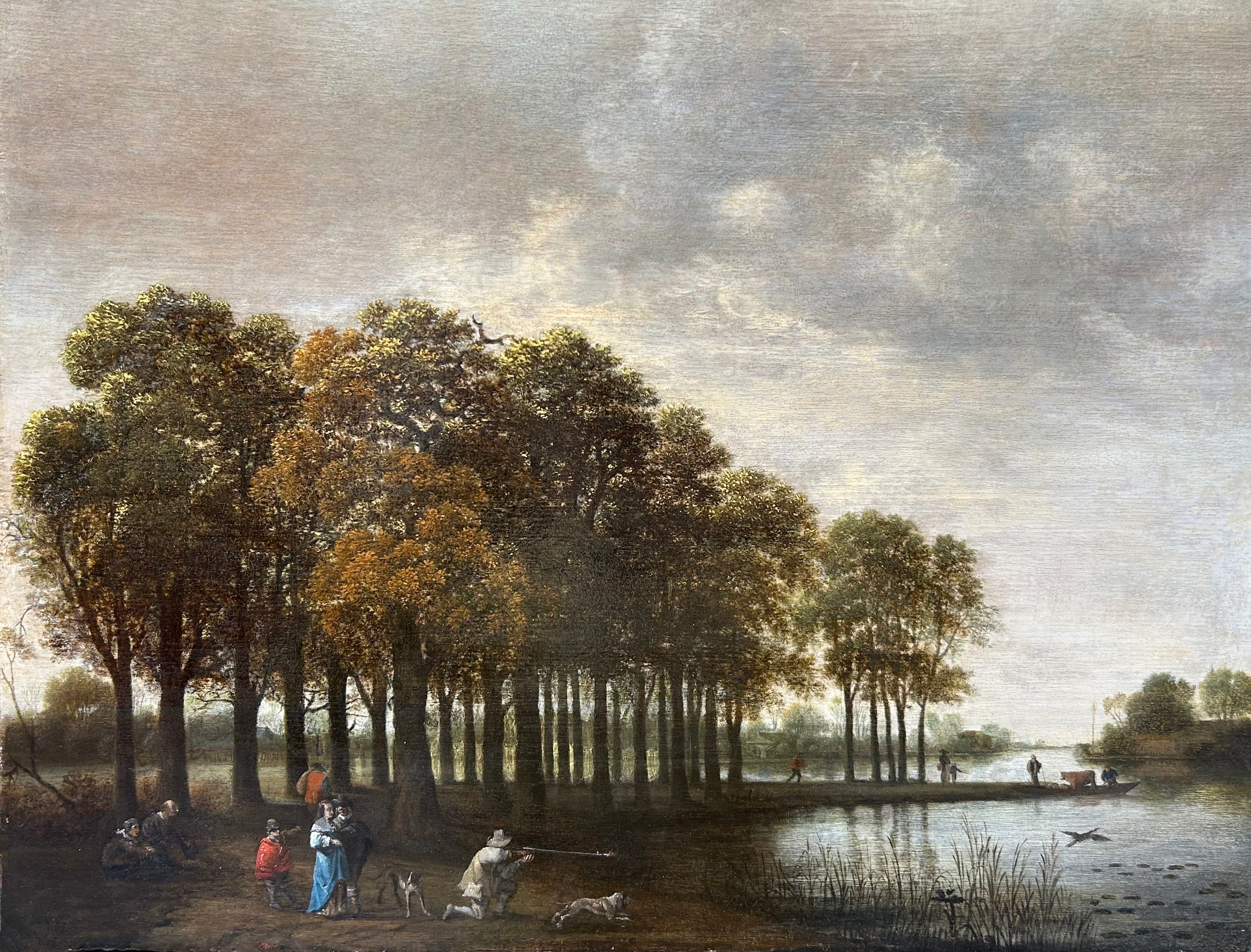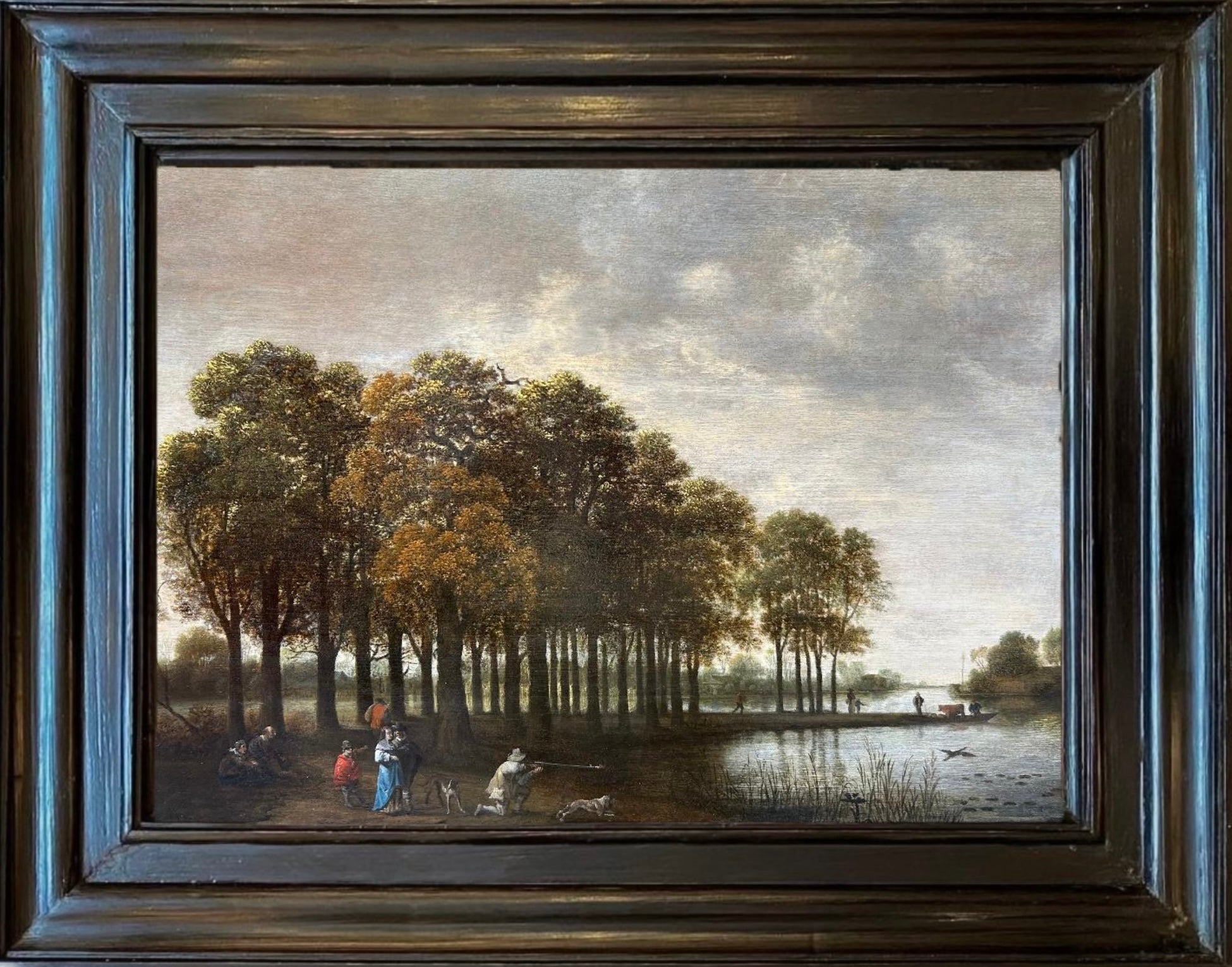

Joris Abrahamsz van der Haagen
Heron Shoot in a Landscape
Dutch ebonised frame
Provenance
At Heim, Paris, 1960s
In this landscape, a heron shoot is taking place. Amongst the figures, we see a wealthy couple in fine drapery observing a hunter lining up his shot on a newly startled heron. A retriever dog rushes towards the heron, eagerly awaiting the opportunity to return the quarry to the hunter. The couple’s entourage surrounds them, whilst farmers can be seen with their cattle in the background.
However, this depiction of a heron shoot is only a minute aspect of this painting, which predominantly focuses on the stunning river landscape. In fact, this painting depicts many different aspects of natural scenery. The river is a prominent feature, with finely detailed lily pads and bulrushes littered along the banks of its silvery water. Van der Haagen’s skill becomes readily apparent with his skilful rendering of the reflections in the water of the trees in the small copse beside the river. Each leaf of each tree is painted in beautiful detail and with colours ranging from luscious greens to autumnal oranges. The third aspect of the landscape is the expansive sky; grey and overcast, with darker clouds in the foreground hinting at the possibility of rain. Van der Haagen’s artistic ability is undeniable; he has painted three incredibly different natural formations and merged them all into one beautiful artwork.
Whilst the events of the hunt in the foreground provide an interesting narrative to the painting, the role of nature is what dominates within the artwork, almost serving as a reminder of the all consuming beauty and power of the natural world in comparison to the whims and pastimes of humanity.
Joris Abrahamsz van der Haagen
Joris Abrahamsz van der Haagen was born in Arnhem in 1615 and was taught how to paint by his father Abraham van der Haagen, who was also an artist. Joris’ career began in a studio in Arnhem, but he relocated to The Hague in 1639 upon the death of his father and eventually became an honorary citizen there.
In The Hague, Joris aimed to capitalise on the patronage stemming from the courts situated there, and became a member of the Guild of Saint Luke in 1643. However, factions began to form in the Guild between craftspeople of different trades, promoting Joris to become a founding member of the Confrerie Pictura - a guild dedicated purely to visual artists.
Joris died in the Hague in 1669, with two of his sons continuing his painterly legacy. He is known for his landscapes, such as the one depicted in this particular Duck Shooting scene, as well as topographical drawings of towns and cities in the Netherlands. Joris collaborated with the staffage artist Ludolf de Jongh for his figuration, as he never painted figures himself. Therefore, it is likely that the hunters in this painting were composed by de Jongh, creating a unique story to the production of this painting.



